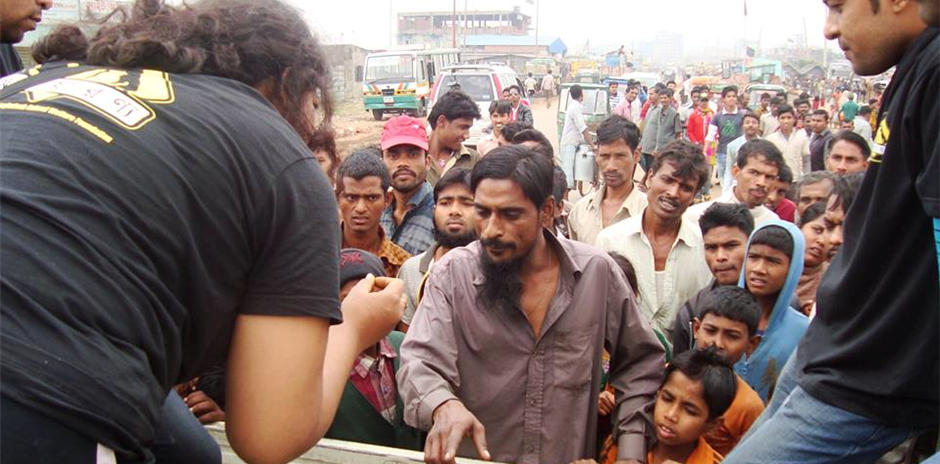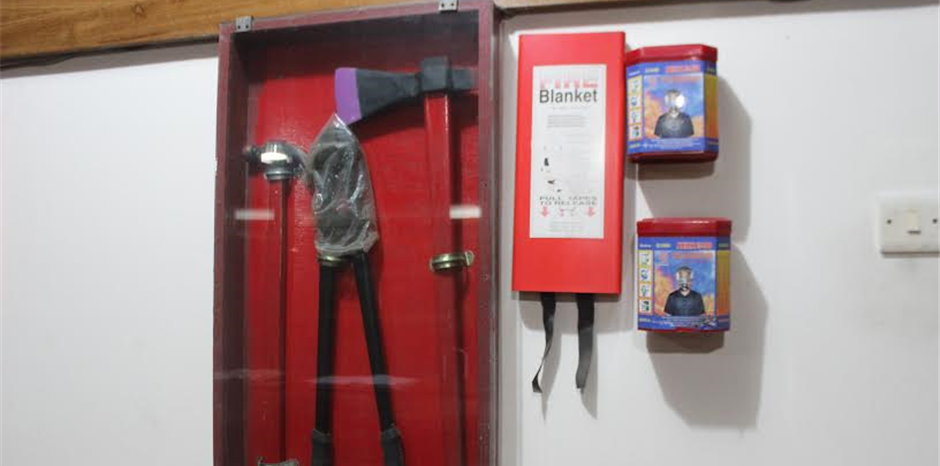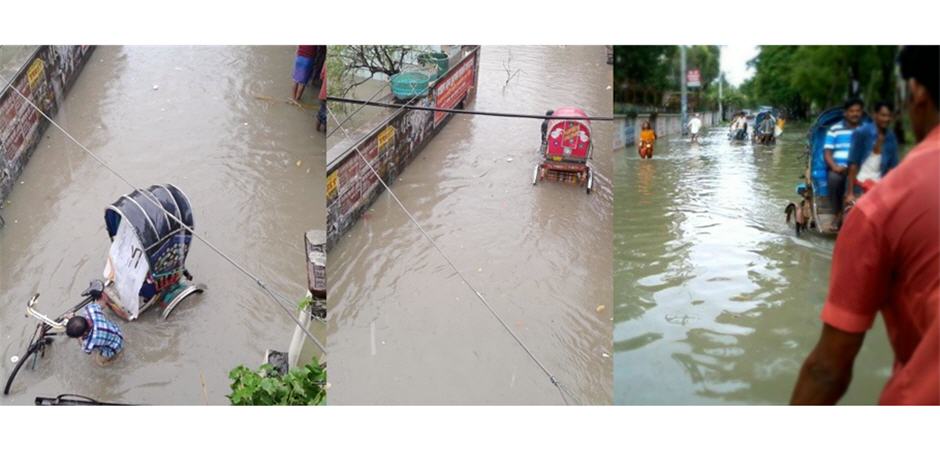Landslide in Badakhshan, Afghanistan
Chittagong, Bangladesh
Landslide is one of natural phenomenon as other phenomenon like volcano, earthquake, flood suchlike that has caught human beings’ attention towards itself; since landslide is a minatory factor for human beings’ life and property. It causes lots of loss and destruction to forests, agricultural lands, mines, buildings, and economics.
Landslide has been introduced as one of the most significant disaster of present decade by United Nations. Now I would give a brief introduction of landslide and its causes.
Landslide is a natural and geological event that includes wide range ground movements or collapse of a huge pile of hillside sediment. It mostly happens in offshore, onshore and coastal environments. Thus by recognizing the causes and characteristics, method of preventing the destruction and damages it brings, can be accessible.
Causes of landslide:
Landslides occur when the stability of the slope changes from a stable to an unstable condition. A change in the stability of a slope can be caused by a number of factors, acting together or alone. Natural causes of landslides include:
Groundwater (pore water) pressure acting to destabilize the slope. Loss or absence of vertical vegetative structure, soil nutrients, and soil structure (e.g. after a wildfire - a fire in forests lasting for 3–4 days).
Erosion of the toe of a slope by rivers or ocean waves. Weakening of a slope through saturation by snow melt, glaciers melting, or heavy rains earthquakes adding loads to barely stable slope.
Earthquake-caused liquefaction destabilizing slopes.
Volcanic eruptions
Landslides are aggravated by human activities deforestation, cultivation and construction, which destabilize the already fragile slopes. Vibrations from machinery or traffic, blasting, earthwork which alters the shape of a slope, or which imposes new loads on an existing slope , in shallow soils, the removal of deep-rooted vegetation that binds colluvium to bedrock and construction, agricultural or forestry activities (logging) which change the amount of water which infiltrates the soil.
Landslide in Badakhshan
Huge landslides caused by heavy rainfall buried hundreds of houses in a remote area of Badakhshan Afghanistan on Friday 2nd May 2014. As many as 2,100 people were said to be missing in the disaster, weeks of steady rain softened the hillside above the village of Abi Barak in the Argo district of Badakhshan Province, near the borders with China and Tajikistan.
Officials said one part of the hill gave way around 11 a.m., burying about 300 houses — by some estimates nearly half the village — in a mass of sodden mud. Neighbors who rushed to help were buried when a second part of the hill slide a short time later.
“I believe it is beyond human capability to even remove all of the dead bodies,” said Shah Waliullah Adeeb, the governor of Badakhshan. “It will take months for machinery to complete the search for bodies.”
The extent of the devastation was also unclear, in part because it was difficult to communicate with the area landslides had knocked down cellphone towers, officials said.
Landslides happen in Afghanistan when part of a natural slope is unable to support its own weight called slope failures. Slope failure is a tectonic transpersonal process that can explain moisture contents resulting precipitation to be set down on west facing slopes along Hindu Kush ranges which are seismicity areas. Also there are some another reasons like heavy rains, snowmelt, changes in level of water ground which causes slope failures and lowering water level in rivers.
Emergency Services:
Emergency workers arrived at the scene on Saturday morning to be faced by the tremendous scale of the landslide, hundreds of homeless families and the risk of more earth sweeping down the hillside. The NATO military is in contact with the Afghan National Army in regards to search and rescue efforts.
The Afghanistan's national security staff gathered two million Afghanis (currency) and sent to those who were injured. The UN was helping to coordinate relief work, but warned that roads to the area could not take heavy machinery because the Badakhshan province is mountainous and have inconvenient ways to transition.
The United Nations, which is helping coordinate the relief effort, said that humanitarian supplies in the area were adequate and that emergency funds would be available if more was needed.
Afghan officials said that 130 tons of flour, 60 tons of rice and 10 tons of sugar were headed to the area and that senior officials would fly there on Saturday with cash to aid displaced families.
Natural disasters are a particularly cruel feature of life in Afghanistan, which is already contending with a deadly insurgency, crippling poverty and a flagging economy. Avalanches, floods and landslides claim dozens of lives each year.
Landslide preparedness measures.
Meet the divisional secretary and discuss the problem of landslides of your community given that it experiences them regularly.
Community members can prepare hazard maps and define the limits of danger zones so as to regulate the activities within those zones.
Organize Watch Groups and Rescue Teams within the community.
Measures to reduce the likelihood of landslides.
Try to protect the slopes. Prevent people from excavating, removing materials from the soil or cutting trees without proper advice from specialized institutions such as National Building Research Organization (NBRO).
Replant trees where they have been removed on slopes and slope base to prevent erosion. Plants with wide spreading root systems such as ‘Wetamara’ and Savandara’ are suitable for this purpose.
Keep records of erosion, landslide masses and falling rocks. Never construct buildings on their debris without proper guidance. Loosened masses can subside when load is added to them.
Avoid building houses at the base of slopes that are prone to landslides. Before purchasing a piece of land or building on your own land, try to get as much information as possible on its history of landslides.
Elders of the area can give you information on past incidents. Landslide hazard zonation maps, if available, can be used to identify the degree of landslide hazard potential of the area. Landslide hazard zonation maps and construction guidelines can be obtained from the NBRO, DMC, or the Divisional Secretary’s office of the area.
When constructing on a slope, use a design that suits the natural slope. This will also save on the cost of construction.
Prepare the ground, so that, it cascades parallel to the natural contours of the slope. Do not remove vegetation and large trees while constructing.
Observe the features on the up slope area before you start any construction. Fill areas constructed above lacking appropriate slope retaining structures, as rock debris or boulders can move into your land. If you are in doubt, obtain advice from a specialist on the subject.
Do not obstruct natural streams or drainage paths during construction. Direct the surface water from your land towards the natural galley enabling water to quickly drain away from the slope.
Avoid dropping rock pieces, boulders, loose earth etc. down the slope during construction. Introduce a retaining structure to prevent movement of cut or filled slopes, if you need to cut or fill your land located on a slope.




